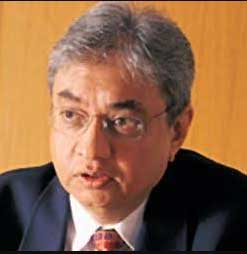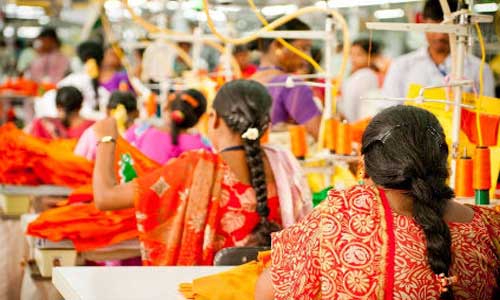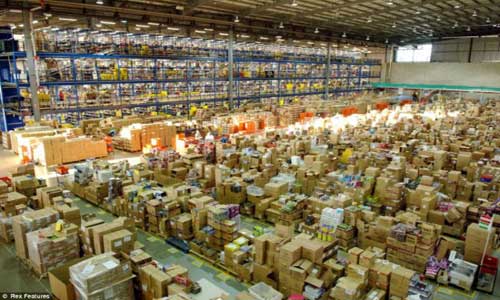FW
Plus-size has become a profit-making segment for apparel retailers over the years. Both genders have been buying plus-size apparels to get out of the skinny and slim fit outfits which have failed to match their size. Women, in particular, have been buying more compared to men.
A recent report by a retail analytics firm, Edited, highlights the poor growth of plus-size menswear over the last five years. The report says women’s wear plus-size market grew 375 per cent in 2012-17; while, the men’s segment reported a 54 per cent decline.
Katie Smith, Senior Analyst at Edited, says retailers have not been able to tap the potential of men’s plus-size market to the fullest. While they have understood how to target women in this segment with the latest trends, fit, colour and more, they have failed to meet even the basic needs of the plus-sized men.
Smith further says sizing has been the key issue missed by retailers. A common confusion that emerged is the differentiation between tall and big (men). It is not necessary that a man who is tall wears a plus-size or vice-versa. However, brands like ASOS, Fabletics, River Island and JCPenney are among the few trying to woo shoppers with their dedicated plus-size collections that keep the segment afloat in the market.
In the meantime, various fashion retailers have diverted their focus on segments like active wear and athleisure wear; especially for men. This has withdrawn the attention from men’s plus-size market, resulting in sales drop. While the bigger ladies continue to enjoy the icing on their ‘plus-size’ cake, the men still rummage for even a small bite of the burgeoning apparel segment.
Benetton has launched ‘Power Her Choices’, a partnership campaign with the United Nations Population Fund to protect women from unintended pregnancies. The Italian company aims to deliver the message that all women and girls have the right to decide freely whether and when to have children.
Organised by the government of United Kingdom, together with UNFPA and the Bill & Melinda Gates Foundation, the London Summit on Family Planning brings together governments, institutions and stakeholders to move towards enabling 120 million additional women to gain access to modern contraception by 2020.
Benetton has been involved in human rights and philanthropy and launching campaigns focused on diversity and joining Greenpeace’s 2020 Detox program with H&M in 2016. The new ‘Power Her Choices’ campaign is intended to raise the bar on awareness about family planning and gain additional partners and signatories to their global commitment.
Apex body Apparel Export Promotion Council (AEPC) has launched Indian Apparel Industry Sustainability (AISA) Program to promote sustainable practices in the apparel industry. A guidance tool on sustainability was released by Ashok G Rajani, Chairman Apparel Export Promotion Council along with Ashok Kumar, and Energy Economist at Bureau of Energy Efficiency.
Rajani said there is a strong emergence of sustainability requirements as an important competitiveness tool. It is a great opportunity for us to differentiate ourselves in the global market and offer a sustainable value chain. He thanked C-Kinetics for developing a comprehensive guide book on the various aspects of optimisation. Through AISA they intend to inculcate and encourage this process-where just doing is not enough but bringing measurability and self-impact assessment is also important.
AEPC seeks to promote greater participation and inclusiveness of the apparel industry in sustainability initiatives. The program is an endeavour to recognise and take affirmative action to counter the challenges that restrict the apparel industry from taking bigger roles in global market on account of noncompliance to sustainable parameters. The initiative aims to be a network of individuals and institutions committed to increasing sustainable practices across various segments of apparel sector.
AEPC, as the apex body of the exporters, aims at providing a platform where apparel manufacturers and exporters can turn to – for all the necessary information and handholding needed for being sustainable in a holistic way. It has prepared a guidance tool on sustainability which will provide guidance to companies on how they can align their strategies as well as measure and manage their contribution to achieving the sustainable goals.
Participants at a recent ‘buyers and sellers’ in Dhaka stressed on production of value-added readymade garment (RMG) products to woo further buyers with good price and sustainable business. The meeting of retailers and manufactures was hosted by the Dutch Ministry of Foreign Affairs in collaboration with the Bangladesh Garment Manufacturers' and Exporters' Association (BGMEA).
Faruque Hassan, Senior VP BGMEA said export earnings from garment products are the lowest in last 15 years and there is no choice other than going for value-added products and adopting modern technologies for sustainable business. Some 28 local apparel makers-a pioneer group of companies offering items belonging to high-fashion segment in the EU market - displayed their range of products. They were also part of the CBI export coaching programme.
The CBI (Centre for the Promotion of Imports) is an initiative of the Dutch Foreign Ministry for improving import from developing countries. The apparel companies received training from the CBI on merchandising, design and sample development and the fashion trend, says the BGMEA leader, adding, the Dutch organisation is assisting the makers in networking with new EU-based buyers who don't source from Bangladesh The companies are part of a select group that have passed the selection committee and will exhibit in Paris at a three-day Premiere Vision on September 19 next.
Terming the EU market stable after polls in some member countries, Dhyana Van Der Pols, Programme Manager, CBI said Bangladesh needs to grow in value-added fashion products manufacturing to increase orders from buyers.
The Ministry of Development Strategies and International Trade and the Sri Lanka Export Development Board (EDB) is conducting the second consultation for Sri Lanka’s National Export Strategy (NES) from July 12 to 20. Over 300 public and private sector representatives are attending to chart the next export growth cycle for the country.
The key aim of the meeting is to set a roadmap to expand export and analyse performance of value chains for NES focus sectors, market orientations, challenges and opportunities. They are also expected to identify challenges in the provision of quality and affordable trade support services to Sri Lanka exporters.
The symposium will be followed by regional discussions during September 2017 where national public and private sector representatives will confirm key interventions that the NES should focus on during the next five years. The development of this strategy is the main focus of ‘EU-Sri Lanka Trade Related Assistance: Enhancing SMEs trade competitiveness in regional and EU markets’ project, implemented by the International Trade Centre and funded by the European Union. During the first NES consultation in April, a strategic vision for Sri Lanka’s export growth was agreed upon.
Burberry Group has reported growth in revenue in the first quarter of its financial year which beat analyst expectations. The compoany now anticipates a lower foreign exchange hit to full-year profit than previously thought.
As per the luxury fashion retailer retail revenue in the three months to June 30 rose 13 per cent year-on-year to £478.0 million, boosted by favourable foreign exchange rates when overseas sales were translated back into the weak pound. On an underlying basis sales grew by 3 per cent, while like-for-like sales increased by 4 per cent.
Burberry says its strength in mainland China drove improved, mid-single-digit percentage growth in Asia Pacific, while Hong Kong also continued to improve. 40 per cent of Burberry's sales come from Chinese customers, versus 30 per cent for the wider luxury goods sector, a slowdown in Asia is problematic for the fashion label.
As things pick up in Asia, growth has been maintained in Europe, the Middle East, India & Africa, where strength in the UK led to high single-digit percentage growth for the whole division in the first quarter. The Americas, delivered a low single-digit percentage decline, which Burberry says was due to reduced demand at home from both tourists and domestic customers. The strength of the US dollar, however, drove a strong increase in sales from US customers abroad.
While the weak pound boosts sales for Burberry, it harms profit due to much of the retailer's products being sourced in US dollars. Analyst say the company believes some of the challenges faced by the luxury sector over the last few years are fading. Indeed, Chinese consumers are returning while a pickup in the European economy is showing through to the luxury sector.
Despite its growing importance as sourcing destination, finding workers with the right skills sets for RMG units was a big challenge. Now Cambodia’s first garments manufacturing training institute, the Cambodian Garment Training Institute, will open doors educating students in apparel design, development, management, merchandising and industry engineering.
Over 160 workers from 14 factories across the country will begin classes being organised by the Garment Manufacturers Association in Cambodia (GMAC), the apex trade body that represents the garment and footwear industries. GMAC aims to be part of the solution to bridge the skills gap that exists in one of Cambodia’s most important industries and will strive to train workers and help fill middle management job vacancies.
GMAC will offer three different diploma programs of three months duration and further, a selection of 27 short courses of three to five days each. However, factories seem reluctant to send their staff to study for the diploma courses because they find the period of absence too long. Most of those attending the initial courses will have their tuition covered by their factories, he added.
GMAC will also offer a ‘Train and Place’ program for high school, university students and current garment workers where post training they can expect to get a job in a factory as a management trainee. The program requires a $800 deposit, but students will receive a minimum salary of $250 as trainees and can expect to make up to $450 per month for similar positions once they graduate after about a year.
"Garment industry is one of the leading exporters in India. It is also the most labour intensive, and an industry which is supporting the government’s main objectives of increasing employment in the country. It is also the fifth largest exporter in the world of garments. “We are the leading exporters of textiles. After a few years of static export growth, we are seeing between 15-18 per cent growth between April and June,” said Rahul Mehta, President, CMAI, during a recent media interaction."

Garment industry is one of the leading exporters in India. It is also the most labour intensive, and an industry which is supporting the government’s main objectives of increasing employment in the country. It is also the fifth largest exporter in the world of garments. “We are the leading exporters of textiles. After a few years of static export growth, we are seeing between 15-18 per cent growth between April and June,” said Rahul Mehta, President, CMAI, during a recent media interaction.
GST impact
Mehta feels there will be a little blip due to GST and therefore, duty drawback rates will be impacted. But as of now the government has announced up to September 30, exporters will be permitted to continue their business as per old norms and that will see a certain amount of stability. He says, the government will have to take into account a plethora of embedded taxes, which are still not covered under the GST and therefore ensure that the adequate duty drawback support is given to the industry to continue its growth in exports. Mehta highlights that the industry has taken certain steps in terms of opening new markets and owing to all these factors the scenario looks promising for the industry.
Apparel export growth

As per Mehta, last year apparel exports were to the tune of $17 billion and this year growth is expected to be between 17-20 per cent from April to March 2017- 2018. Welcoming GST, he says our industry has by and large welcome the GST. There are a few issues that are still pending, which we are talking to the government about and in the long run this will have a positive impact on the industry, but specifically from exports point of the view, the government will have to take into account embedded taxes and they will still have to support the industry with a certain amount of duty drawback and along with a fair and smooth execution of the GST, “we are on a good wicket,” remarks Mehta.
"Online retail is gaining strength when it comes to intimate wear purchase, reveals a recently released report by One Click Retail. The report states women who feel ‘awkward’ buying bras and underwear at brick-and-mortar retailers are now ringing up their lingerie purchases online instead, and this is helping Amazon gain market share. In 2016, the total value of the US apparel market — both online and offline — was $200 billion, with Amazon claiming about $3.4 billion of that, One Click Retail said."

Online retail is gaining strength when it comes to intimate wear purchase, reveals a recently released report by One Click Retail. The report states women who feel ‘awkward’ buying bras and underwear at brick-and-mortar retailers are now ringing up their lingerie purchases online instead, and this is helping Amazon gain market share. In 2016, the total value of the US apparel market — both online and offline — was $200 billion, with Amazon claiming about $3.4 billion of that, One Click Retail said. While total US apparel sales climbed 3 per cent last year, Amazon's apparel sales in the US saw a 25 per cent increase over the same period.

The top-performing apparel categories on Amazon.com in 2016 included men’s bottoms, which pulled in $375 million in sales; women's intimate apparel, which boasted $250 million in sales; women’s denim, with revenue of $170 million; and men's underwear, with sales of $165 million, according to data from One Click Retail. “Our data shows that the company is having great success with necessities and everyday items such as jeans, socks, underwear and men's work clothes,” the report said. Though, in their efforts toward a hassle-free shopping experience, Amazon is investing in innovation: in payments, order fulfillment, product selection and now, with Amazon Prime Wardrobe, return policy flexibility.
Prime Wardrobe
In order to ease shopping experience, Amazon has launched Prime Wardrobe, a new fashion platform, which looks similar to other wardrobe subscription services like Stitch Fix and Trunk Club. According to Amazon's website, Prime Wardrobe includes brands outside of Amazon's private labels, for example, Adidas, Calvin Klein, Levi's and Hugo Boss. The service allows customers to order items like shoes, clothes or accessories at no upfront charge, only paying for what they decide to keep. Shoppers have seven days to decide what they don't want.
Amazon’s share in the US
Amazon still boasts of a 5 per cent share of total retail sales, excluding food, across the country, according to data from the US Census Bureau. But Amazon's share of retail sales across the US in key categories — sporting goods, clothing, personal care and electronics — will only continue to accelerate from here.
Considering that department stores, discount stores and specialty stores remain the top store formats where women shop most often for clothes, Amazon might place its bet on real estate heavy acquisition, according to a recent research report from Fung Global Retail & Technology.
Sahib Mammadov, Azerbaijan’s deputy economy minister says that an association of textile producers and exporters was being established in Azerbaijan. The minister said textile industry entrepreneurs unanimously approved this initiative and went on to elaborate that the establishment of such an association would accelerate the process of making appropriate/necessary decisions targeted at the development of this segment. The minister was of the view that such associations served to improve relations between the state and the private sector. He further disclosed that there were already eight associations in the country and today was the establishment of the ninth association.
Arif Mardanov, Executive Director of the Baku spinning and weaving factory felt that the association must solve a number of problems in this segment. One of the main problem was lack of production of raw materials for the industry as over 70 per cent of raw materials were imported from foreign countries. He noted that despite the fact that they have recently increased production of cotton, the quality left much to be desired and everybody should work hard to resolve this issue.












